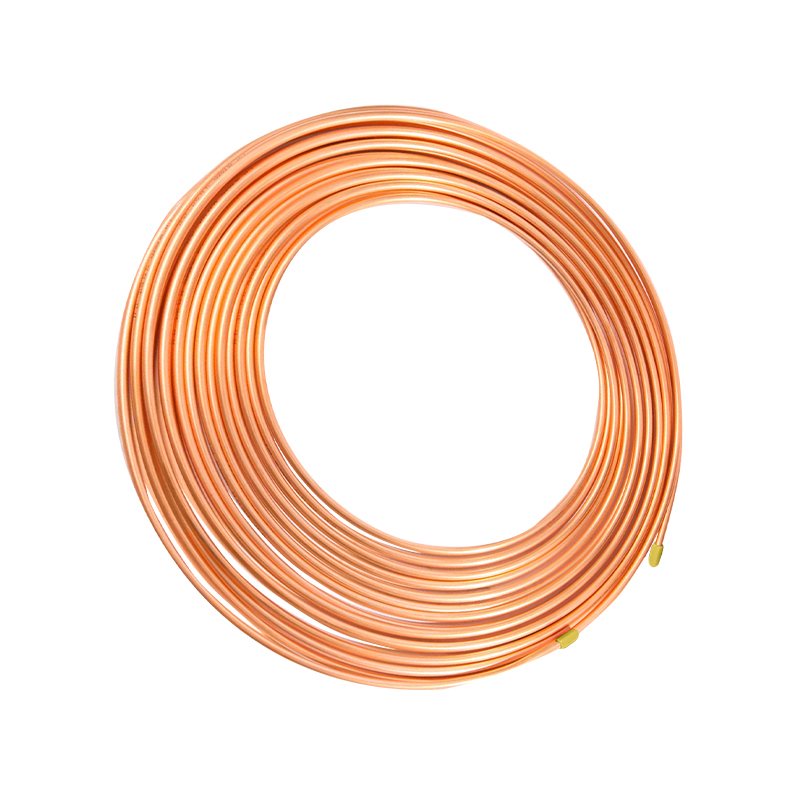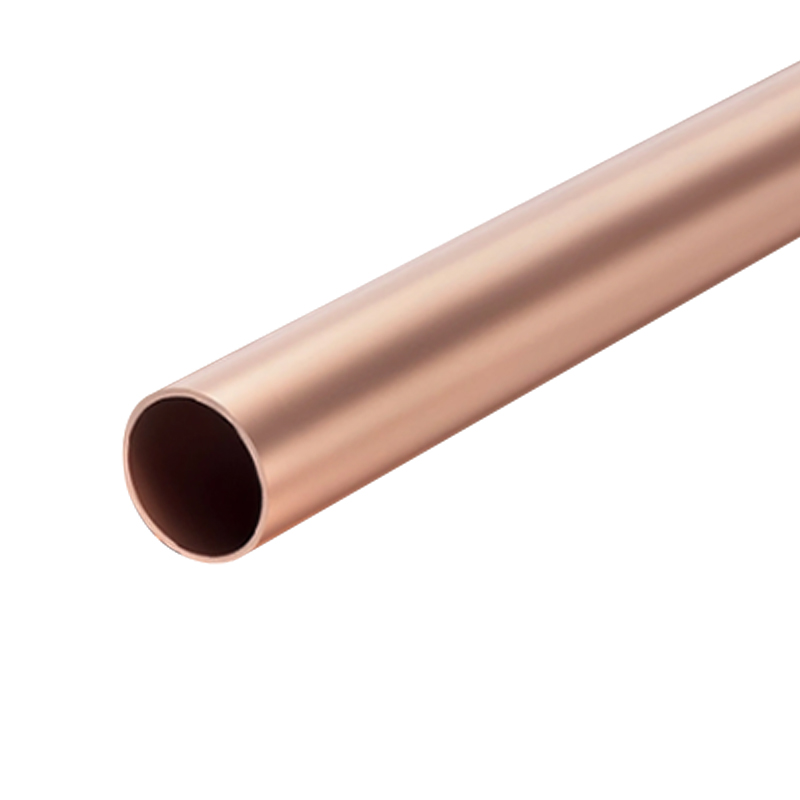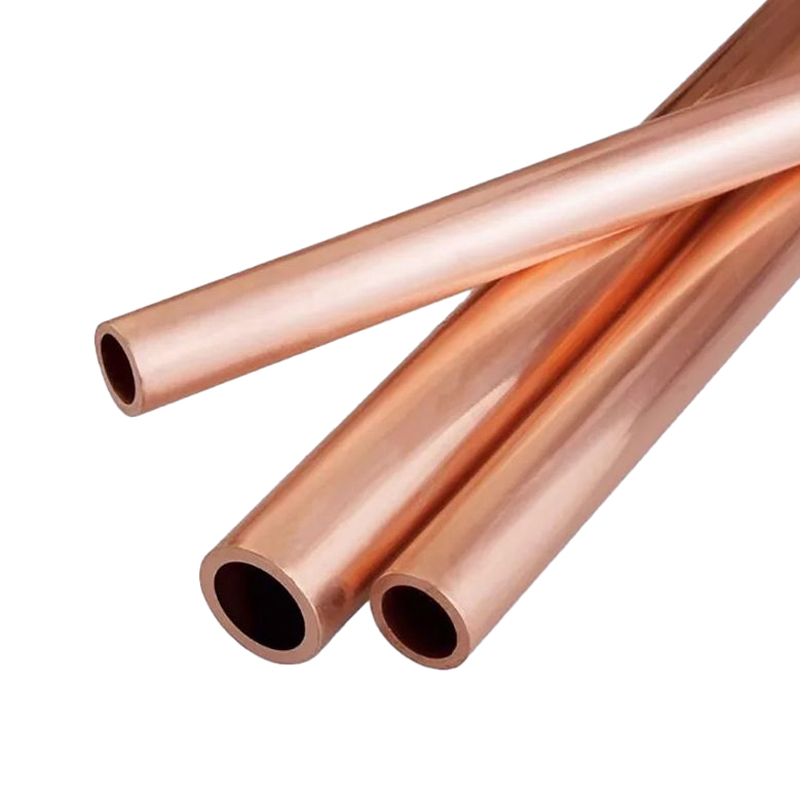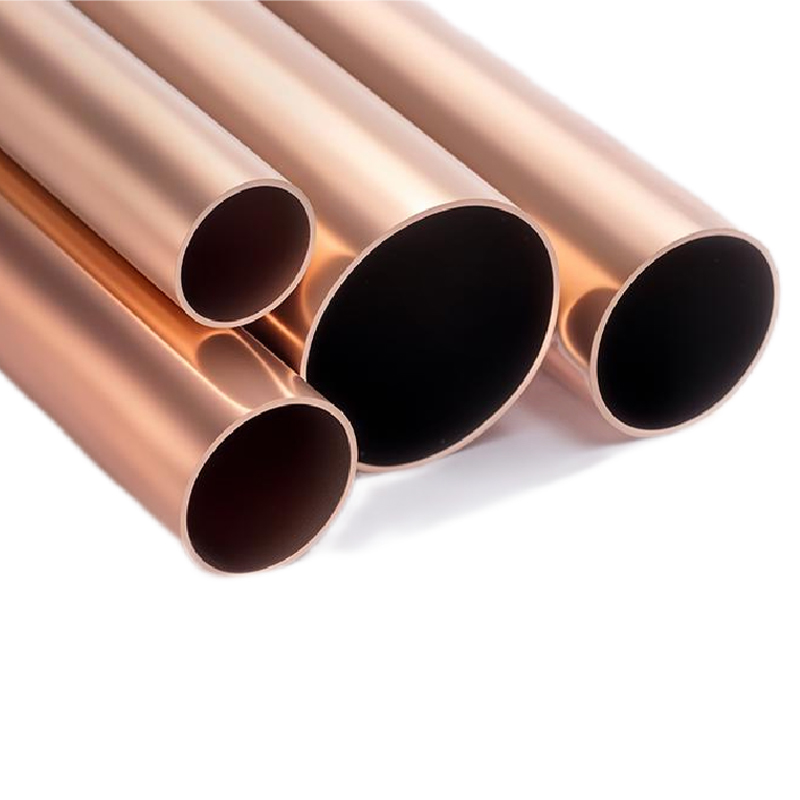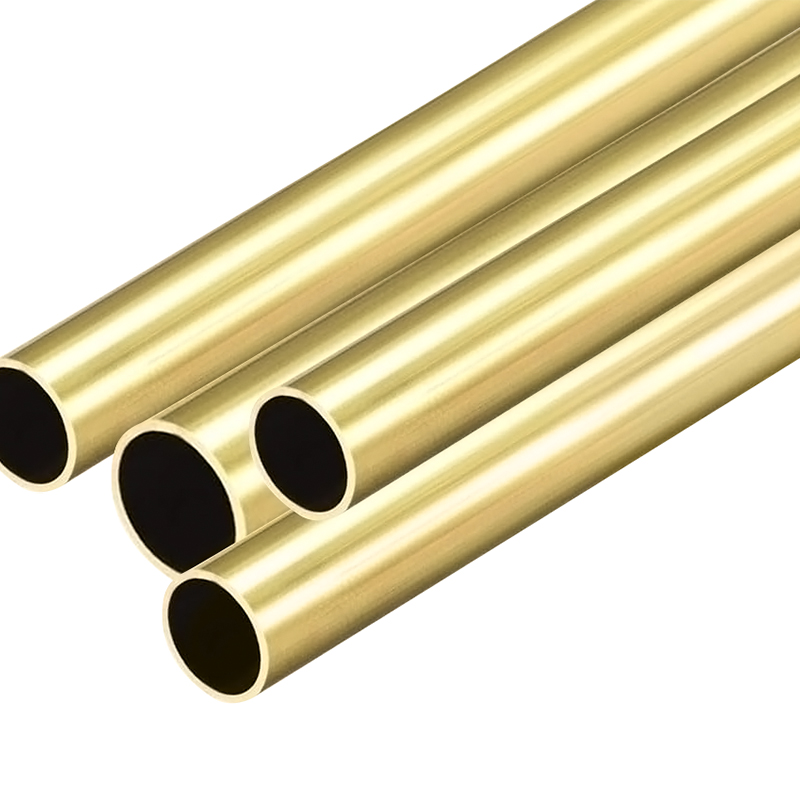Copper capillary tube is usually manufactured by precision machining, and its dimensional accuracy can reach one thousandth of an inch. This ultra-high precision tube has a very small inner diameter, which can achieve smoother and more uniform air flow transmission, while significantly improving the monitoring accuracy of fluid parameters. These advantages make it show practical value in key applications such as fluid control devices and air flow restrictors. There are two conventional forms: straight tube and coil. It is mainly used in refrigerators, refrigeration equipment, temperature control switches, and other fields.
ABOUT US
30+YEARS OF
EXPERIENCE
About Us
A Reliable Partner of the Copper Tube Industry
Zhejiang Jingliang Copper-Tube Products Co., Ltd established in 1994, is China Copper Capillary Tube Manufacturers and Custom Copper Coil Capillary Tube Suppliers, has been deeply involved in the copper tube industry for over three decades. The company primarily produce various specifications of products such as copper tubes, brass tubes, copper square tubes, fin copper tubes, copper capillary tubes, condenser copper tubes, copper evaporator tubes, and conductive rods, which are of quality and have earned the trust and acclaim of customers both domestically and internationally.
Wide Applications:
These products are widely used in various fields including air conditioning, refrigeration, heat exchange, sanitary ware, automotive, machinery, electric furnaces, and chemical industries.
Convenient Transportation:
Strategically located in Tangpu Town, renowned as the “home of copper tubes” in East China. Our company enjoys a prime location, adjacent to the Shangsan Expressway and National Highway 104, and is conveniently situated just over 70 kilometers from Hangzhou and Ningbo, ensuring easy accessibility and a business position.
Strong Financial Resources:
With its strong financial resources and advanced copper tube processing technology, our company holds an advantageous position in market share, brand value, technological content, and product quality, becoming a preferred supplier for many listed groups.
Large Scale Production:
The company occupies an area of over 20,000 square meters, with a construction area of 12,800 square meters. In 2022, our annual production exceeded 7,500 tons, with a value output of up to 450 million yuan, demonstrating our strong production capacity and market competitiveness.
Comprehensive Industry Chain:
Jingliang has now developed into a complete industrial chain integrating smelting, extrusion, drawing, precision rolling, and annealing. It has been awarded multiple honors, including "Top Ten Copper Tube Enterprises" and "Leading Taxpayer in the Copper Tube Industry".
Smart Manufacturing:
Jingliang Copper-Tube Products will better integrate the concept of factory construction into its corporate development strategy, insist on refining technology and polishing products more finely, and the future of "intelligent manufacturing".
Genuine Cooperation:
Zhejiang Jingliang Copper-Tube Products Co.,Ltd warmly welcomes friends from all walks of life to visit and offer guidance. We look forward to joining hands with you to create a brilliant future together.
Technical skills
Production Process
- 1、Electrolytic Copper
- 2、Copper Ingots
- 3、Press
- 4、Drawing
- 5、Rolling
- 6、Packaging
Electrolytic copper, produced through electrolytic processes, is a high-purity copper with good electrical conductivity and thermal conductivity, making it an ideal material for manufacturing copper pipes.
This marks the beginning of our production process, which involves the fabrication of electrolytic copper into pure copper or brass ingots according to specific requirements, followed by cutting to facilitate subsequent processing and handling.
In the pressing stage, the cut copper ingots are pressed into thin sheets or tubular shapes, forming the initial tube shape, and the copper ingots are prepared for drawing and rolling.
Drawing is the process of further processing the copper sheets or tubular objects that have been pressed into the required dimensions and shapes. Through drawing, our copper tubes can achieve precise outer diameters and wall thicknesses.
Rolling is the step of further processing the copper tubes after drawing. Through rolling, the copper tubes are rolled into more precise dimensions and shapes to meet the requirements of different applications.
Finally, the copper tubes that have undergone rolling will be packaged and prepared for shipping. We ensure that the packaging is safe and protective to prevent damage during transportation.
News
-
Copper Tube Industry Segmentation Report: How Are Niche Markets Reshaping the Competitive Landscape?
Subtitle: While traditional copper tubes grapple with price wars, segments like semiconductor-grade oxygen-free copper tubes and ultra-thin wall tubes for new energy vehicles achieve 30%+ gross margins—how do these niche products, represent...
READ MORE -
In the world of heat exchangers, air conditioning systems, refrigeration units, and other thermal management applications, the choice of materials for the tubes that facilitate heat transfer is crucial. Copper and aluminum are two of the mo...
READ MORE -
Refrigeration systems are essential in modern-day life, from preserving food and medicine to maintaining the comfort of our homes and workplaces. One of the key components that ensure the efficient operation of these systems is the capillar...
READ MORE
Industry knowledge
What are the main applications of copper capillary tubes in refrigeration and air-conditioning systems?
Copper capillary tubes play an indispensable role in refrigeration and air-conditioning systems, serving as a crucial component for regulating refrigerant flow. The basic function of a capillary tube is to create a pressure drop in the refrigerant through its narrow passage, shifting it from a high-pressure state to a low-pressure state.
Pressure Drop Regulation: The core function of a copper capillary tube is to create a pressure drop in the refrigerant as it passes through the tube. The refrigeration system's compressor compresses the gaseous refrigerant to a high pressure, cools it to a liquid state through the condenser, and the liquid refrigerant then flows through the copper capillary tube to the evaporator. During this process, the copper capillary tube creates a pressure drop across its small inner diameter. This pressure drop causes the liquid refrigerant to enter a low-pressure, low-temperature state, where it enters the evaporator and begins absorbing heat, thus completing the heat exchange process. This function of the capillary tube is crucial to the refrigeration cycle.
Flow Control: The diameter, length, and surface finish of the copper capillary tube directly affect the refrigerant flow rate. By precisely controlling the flow rate, the Copper Capillary Tube ensures the evaporator is filled with the appropriate amount of refrigerant, allowing for full evaporation and achieving optimal heat exchange. Excessive flow in the Copper Capillary Tube can lead to excessively high evaporator temperatures, impacting system performance. Excessive flow prevents sufficient evaporation of the refrigerant, also affecting cooling efficiency. Therefore, the Copper Capillary Tube must be tailored to the design and needs of the refrigeration system to ensure maximum system efficiency.
Energy Savings and Improving System Efficiency: Copper Capillary Tubes precisely control the flow rate, helping to improve the energy efficiency of the entire refrigeration system. Due to copper's excellent thermal conductivity, capillary tubes effectively control the flow rate while ensuring efficient heat exchange between the refrigerant and the heat exchange surface. In air conditioning systems in particular, precisely regulating the flow rate ensures system stability and efficiency, reducing energy consumption. Furthermore, the high thermal conductivity of the Copper Capillary Tube reduces heat loss in the system, further improving energy efficiency.
Adaptability: Copper Capillary Tubes can adapt to the flow requirements of different refrigerants. Copper Capillary Tubes provide effective flow control for common refrigerants such as R22, R134a, and R410A. This adaptability makes copper capillary tubes a highly versatile and economical component in refrigeration and air-conditioning systems. By adjusting the length and diameter of the capillary tube, its performance can be optimized for different systems, ensuring efficient operation of different refrigerants.
What are the material and process requirements for copper capillary tube manufacturing?
Copper capillary tube production requires precise craftsmanship and high-quality raw materials. Zhejiang Jingliang Copper-Tube Products Co., Ltd., a company with over 30 years of experience, enjoys a high reputation in the industry for its technical expertise and process requirements in copper capillary tube manufacturing. Leveraging its strong production capacity, advanced processing technology, and comprehensive supply chain, the company is able to provide high-quality copper capillary tubes to meet the application needs of various refrigeration and air-conditioning systems.
Material Selection
The manufacturing of copper capillary tubes begins with the selection of high-purity copper or copper alloys. Zhejiang Jingliang Copper-Tube Products Co., Ltd. primarily utilizes C11000 high-purity copper and C12000 phosphor bronze. C11000 copper offers excellent thermal conductivity, making it suitable for general air conditioning and refrigeration systems, while C12000 phosphor bronze offers strong corrosion resistance, making it suitable for more demanding environments, such as marine environments and industrial applications subject to severe chemical corrosion. Because copper capillary tubes are subject to diverse operating environments, material selection is crucial, directly impacting product durability, flow control accuracy, and overall performance.
Zhejiang Jingliang Copper-Tube Products Co., Ltd. rigorously selects raw materials and utilizes advanced smelting and processing technologies to ensure the high quality and superior performance of its copper tubes. These materials undergo professional testing to ensure they meet high standards for thermal conductivity, corrosion resistance, and mechanical strength, laying a solid foundation for the smooth operation of subsequent processes.
Drawing and Extrusion
The manufacturing process for copper capillary tubes primarily involves extrusion and drawing. First, a copper rod is formed into a thick tube through extrusion. During extrusion, the copper material is heated to a certain temperature and then squeezed through a die into a tubular shape. Because the capillary tubes require very precise inner diameters, they are further processed through a drawing process. The drawing process gradually reduces the diameter of the copper tube to achieve the desired inner diameter and wall thickness.
Zhejiang Jingliang Copper-Tube Products Co., Ltd. utilizes advanced drawing and extrusion technologies, utilizing high-precision equipment and dies, to ensure that the capillary tubes meet stringent standards for inner diameter accuracy, surface finish, and mechanical properties. In particular, regarding wall thickness control, Zhejiang Jingliang Copper-Tube Products Co., Ltd.'s technical team can precisely adjust the specifications of copper capillary tubes to meet the flow and pressure requirements of various refrigeration systems based on specific customer needs.
Annealing
Copper capillary tubes generate internal stress during the drawing or extrusion process, making annealing a crucial process. Annealing involves heating the copper tube to a specific temperature and holding it for a specified period of time to eliminate internal stress, making it more flexible and easier to process and use. Annealing not only improves the copper tube's mechanical properties but also enhances its corrosion resistance.
Zhejiang Jingliang Copper-Tube Products Co., Ltd. utilizes precision-controlled annealing technology to ensure that the temperature and time of each batch of capillary tubes are properly controlled, thereby maintaining the stability and high performance of its copper capillary tubes. The company's intelligent manufacturing technology further improves production efficiency and product quality, ensuring that each capillary tube meets stringent quality standards.
Surface Treatment
Surface treatment of copper capillary tubes is a critical step in ensuring corrosion resistance and longevity. Common surface treatment methods include electroplating nickel, tin plating, and coating. Copper capillary tubes undergo nickel and tin plating processes to effectively enhance their surface corrosion resistance, significantly extending their service life, particularly in harsh environments such as chemicals or marine environments.
Zhejiang Jingliang Copper-Tube Products Co., Ltd. utilizes advanced surface treatment technology to ensure each capillary tube has a smooth surface and excellent corrosion resistance, effectively resistant to corrosive substances such as moisture and chlorides commonly found in refrigeration and air-conditioning systems. The company boasts a strong R&D team and is able to provide customized surface treatment solutions tailored to customer needs, meeting the specific performance requirements of capillary tubes in diverse environments.
Precision Testing
During the production process, each piece of copper capillary tube undergoes rigorous quality testing. Zhejiang Jingliang Copper-Tube Products Co., Ltd. utilizes advanced testing equipment to inspect capillary tubes for various indicators, including dimensions, mechanical properties, and surface quality. The company uses an automated inspection system to ensure that each capillary tube meets design requirements for inner and outer diameter, wall thickness, length, and surface finish, and can withstand pressure fluctuations, temperature changes, and other challenges during use.
In addition to routine dimensional and visual inspections, Zhejiang Jingliang Copper-Tube Products Co., Ltd. also conducts pressure and corrosion tests to ensure stable operation in real-world applications. This comprehensive inspection process ensures high product quality and long life.
Integrating with Company Strengths
As a leading copper tube manufacturer in China, Zhejiang Jingliang Copper-Tube Products Co., Ltd. boasts industry-leading advantages in material selection, process design, technology research and development, and quality control. Since its establishment in 1994, the company has consistently focused on innovation and technological development in copper tube products. It has not only established a strong brand presence in the domestic market, but has also successfully expanded into the international market, earning widespread customer trust.
The company boasts a complete industrial chain, with independent production capabilities covering processes from smelting, extrusion, and drawing to precision testing and surface treatment, ensuring strict product quality control at every stage. Zhejiang Jingliang Copper-Tube Products Co., Ltd. also focuses on the application of intelligent manufacturing. Through advanced manufacturing equipment and precise process control, it improves production efficiency while maintaining high product quality and stability, meeting customers' high standards for copper capillary tubes in refrigeration systems.
How does the length of the copper capillary tube affect refrigeration cycle efficiency?
The length of the copper capillary tube has a significant impact on the efficiency of the refrigeration system, primarily in terms of pressure drop, flow regulation, and heat exchange efficiency. The longer the capillary tube, the greater the pressure drop of the refrigerant as it passes through it, which may affect the overall performance of the system.
Pressure Drop and Flow Control
The length of the copper capillary tube directly affects the pressure drop of the refrigerant as it passes through the tube. The greater the pressure drop, the lower the refrigerant flow rate. A reasonable pressure drop helps control the pressure and temperature of the refrigerant entering the evaporator, thereby optimizing the heat exchange process. However, an excessively long copper capillary tube can cause excessive pressure drop, resulting in a low refrigerant flow rate, which in turn affects heat exchange efficiency within the evaporator and reduces cooling performance. A capillary tube that is too short can cause excessive refrigerant flow, preventing efficient evaporation and resulting in energy loss.
Heat Exchange Efficiency
The length of the copper capillary tube is closely related to the heat exchange efficiency of the system. In a refrigeration system, the flowing refrigerant exchanges heat with the air or water, removing heat from the environment. An excessively long copper capillary tube can slow the refrigerant flow rate, preventing it from fully absorbing ambient heat and reducing heat exchange efficiency. Conversely, an excessively short copper capillary tube can result in excessive refrigerant flow, preventing effective heat exchange with the evaporator surface, and thus affecting cooling performance.
System Design Matching
The length of the copper capillary tube must be tailored to the overall refrigeration system design. Factors such as the system's cooling load, evaporating temperature, and condensing temperature all influence the length of the copper capillary tube. For systems with high loads, a longer copper capillary tube is generally required to ensure sufficient pressure drop to accommodate the flow requirements under high loads. For systems with lower loads, a shorter capillary tube can meet the requirements. By carefully designing the copper capillary tube length, you can ensure optimal heat exchange and efficient operation of the refrigeration system under various operating conditions.
System Startup and Operation
The length of the copper capillary tube also affects the startup performance of the refrigeration system. During system startup, the refrigerant flow rate is low, and an excessively long capillary tube may result in insufficient flow, slowing the system startup. An appropriate capillary tube length ensures smooth refrigerant flow into the evaporator during system startup, ensuring optimal operation.

 English
English Español
Español
